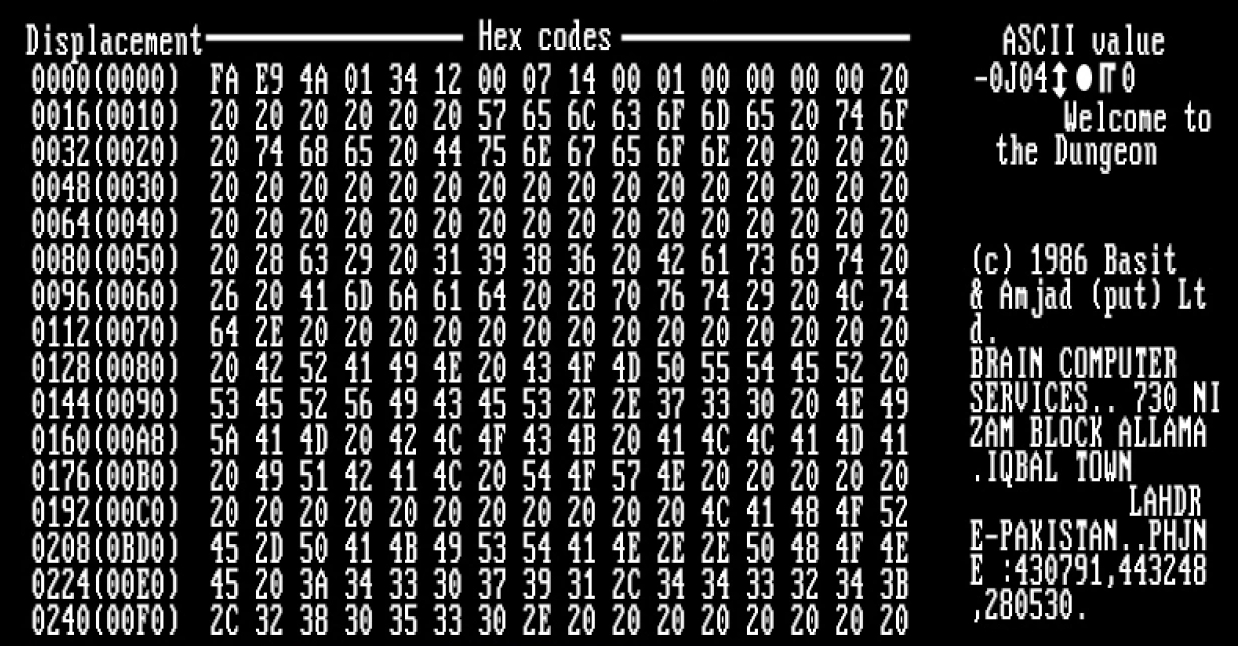|
Secure Trusted Operating Program
The XTS-400 is a multilevel secure computer operating system. It is multiuser and multitasking that uses multilevel scheduling in processing data and information. It works in networked environments and supports Gigabit Ethernet and both IPv4 and IPv6. The XTS-400 is a combination of Intel x86 hardware and the Secure Trusted Operating Program (STOP) operating system. XTS-400 was developed by BAE Systems, and originally released as version 6.0 in December 2003. STOP provides ''high-assurance'' security and was the first general-purpose operating system with a Common Criteria assurance level rating of EAL5 or above. The XTS-400 can host, and be trusted to separate, multiple, concurrent data sets, users, and networks at different sensitivity levels. The XTS-400 provides both an ''untrusted'' environment for normal work and a trusted environment for administrative work and for privileged applications. The untrusted environment is similar to traditional Unix environments. It prov ... [...More Info...] [...Related Items...] OR: [Wikipedia] [Google] [Baidu] |
|
 |
BAE Systems
BAE Systems plc is a British Multinational corporation, multinational Aerospace industry, aerospace, military technology, military and information security company, based in London. It is the largest manufacturer in Britain as of 2017. It is the largest defence contractor in Europe and the seventh largest in the world based on applicable 2021 revenues. Its largest operations are in the United Kingdom and in the United States, where its BAE Systems Inc. subsidiary is one of the six largest suppliers to the United States Department of Defense, US Department of Defense. Its next biggest markets are Saudi Arabia, then Australia; other major markets include Canada, Japan, India, Turkey, Qatar, Oman and Sweden. The company was formed on 30 November 1999 by the British pound sterling, £7.7 billion purchase of and merger of Marconi Electronic Systems (MES), the defence electronics and naval shipbuilding subsidiary of the General Electric Company plc (GEC), with British Aerospace ... [...More Info...] [...Related Items...] OR: [Wikipedia] [Google] [Baidu] |
|
Role-based Access Control
In computer systems security, role-based access control (RBAC) or role-based security is an approach to restricting system access to authorized users, and to implementing mandatory access control (MAC) or discretionary access control, discretionary access control (DAC). Role-based access control is a policy-neutral access control mechanism defined around roles and privileges. The components of RBAC such as role-permissions, user-role and role-role relationships make it simple to perform user assignments. A study by NIST has demonstrated that RBAC addresses many needs of commercial and government organizations. RBAC can be used to facilitate administration of security in large organizations with hundreds of users and thousands of permissions. Although RBAC is different from MAC and DAC access control frameworks, it can enforce these policies without any complication. Design Within an organization, role (computer science), roles are created for various job functions. The permiss ... [...More Info...] [...Related Items...] OR: [Wikipedia] [Google] [Baidu] |
|
|
Bell–LaPadula Model
The Bell–LaPadula model (BLP) is a state-machine model used for enforcing access control in government and military applications. It was developed by David Elliott Bell, and Leonard J. LaPadula, subsequent to strong guidance from Roger R. Schell, to formalize the U.S. Department of Defense (DoD) multilevel security (MLS) policy. The model is a formal state transition model of computer security policy that describes a set of access control rules which use security labels on objects and clearances for subjects. Security labels range from the most sensitive (e.g., "Top Secret"), down to the least sensitive (e.g., "Unclassified" or "Public"). Features The Bell–LaPadula model focuses on data confidentiality and controlled access to classified information, in contrast to the Biba Integrity Model which describes rules for the protection of data integrity. In this formal model, the entities in an information system are divided into subjects and objects. The notion of a "secu ... [...More Info...] [...Related Items...] OR: [Wikipedia] [Google] [Baidu] |
|
 |
Computer Virus
A computer virus is a type of malware that, when executed, replicates itself by modifying other computer programs and Code injection, inserting its own Computer language, code into those programs. If this replication succeeds, the affected areas are then said to be "infected" with a computer virus, a metaphor derived from biological viruses. Computer viruses generally require a Computer program, host program. The virus writes its own code into the host program. When the program runs, the written virus program is executed first, causing infection and damage. By contrast, a computer worm does not need a host program, as it is an independent program or code chunk. Therefore, it is not restricted by the Computer program, host program, but can run independently and actively carry out attacks. Virus writers use social engineering (security), social engineering deceptions and exploit detailed knowledge of vulnerability (computing), security vulnerabilities to initially infect systems an ... [...More Info...] [...Related Items...] OR: [Wikipedia] [Google] [Baidu] |
 |
National Security Agency
The National Security Agency (NSA) is an intelligence agency of the United States Department of Defense, under the authority of the director of national intelligence (DNI). The NSA is responsible for global monitoring, collection, and processing of information and data for global intelligence and counterintelligence purposes, specializing in a discipline known as signals intelligence (SIGINT). The NSA is also tasked with the protection of U.S. communications networks and information systems. The NSA relies on a variety of measures to accomplish its mission, the majority of which are clandestine. The NSA has roughly 32,000 employees. Originating as a unit to decipher coded communications in World War II, it was officially formed as the NSA by President Harry S. Truman in 1952. Between then and the end of the Cold War, it became the largest of the U.S. intelligence organizations in terms of personnel and budget. Still, information available as of 2013 indicates that the C ... [...More Info...] [...Related Items...] OR: [Wikipedia] [Google] [Baidu] |
|
Controlled Access Protection Profile
The Controlled Access Protection Profile, also known as CAPP, is a Common Criteria security Security is protection from, or resilience against, potential harm (or other unwanted coercion). Beneficiaries (technically referents) of security may be persons and social groups, objects and institutions, ecosystems, or any other entity or ... profile that specifies a set of functional and assurance requirements for information technology products. Software and systems that conform to CAPP standards provide access controls that are capable of enforcing access limitations on individual users and data objects. CAPP-conformant products also provide an audit capability which records the security-relevant events which occur within the system. CAPP is intended for the protection of software and systems where users are assumed to be non-hostile and well-managed, requiring protection primarily against threats of inadvertent or casual attempts to breach the security protections. It is not i ... [...More Info...] [...Related Items...] OR: [Wikipedia] [Google] [Baidu] |
|
|
SCSI
Small Computer System Interface (SCSI, ) is a set of standards for physically connecting and transferring data between computers and peripheral devices, best known for its use with storage devices such as hard disk drives. SCSI was introduced in the 1980s and has seen widespread use on servers and high-end workstations, with new SCSI standards being published as recently as SAS-4 in 2017. The SCSI standards define commands, protocols, electrical, optical and logical interfaces. The SCSI standard defines command sets for specific peripheral device types; the presence of "unknown" as one of these types means that in theory it can be used as an interface to almost any device, but the standard is highly pragmatic and addressed toward commercial requirements. The initial Parallel SCSI was most commonly used for hard disk drives and tape drives, but it can connect a wide range of other devices, including scanners and optical disc drives, although not all controllers can handle ... [...More Info...] [...Related Items...] OR: [Wikipedia] [Google] [Baidu] |
|
 |
Hard Disk Drive
A hard disk drive (HDD), hard disk, hard drive, or fixed disk is an electro-mechanical data storage device that stores and retrieves digital data using magnetic storage with one or more rigid rapidly rotating hard disk drive platter, platters coated with magnetic material. The platters are paired with disk read-and-write head, magnetic heads, usually arranged on a moving actuator arm, which read and write data to the platter surfaces. Data is accessed in a random-access manner, meaning that individual Block (data storage), blocks of data can be stored and retrieved in any order. HDDs are a type of non-volatile storage, retaining stored data when powered off. Modern HDDs are typically in the form of a small disk enclosure, rectangular box. Hard disk drives were introduced by IBM in 1956, and were the dominant secondary storage device for History of general-purpose CPUs, general-purpose computers beginning in the early 1960s. HDDs maintained this position into the modern er ... [...More Info...] [...Related Items...] OR: [Wikipedia] [Google] [Baidu] |
 |
Uninterruptible Power Supply
An uninterruptible power supply (UPS) or uninterruptible power source is a type of continual power system that provides automated backup electric power to a electrical load, load when the input power source or mains electricity, mains power fails. A UPS differs from a traditional auxiliary power, auxiliary/emergency power system or standby generator in that it will provide near-instantaneous protection from input power interruptions by switching to energy stored in battery packs, supercapacitors or flywheels. The on-battery run-times of most UPSs are relatively short (only a few minutes) but sufficient to "buy time" for initiating a standby power source or properly shutting down the protected equipment. Almost all UPSs also contain integrated surge protection to shield the output appliances from voltage spikes. A UPS is typically used to protect hardware such as computers, hospital equipment, data centers, telecommunications equipment or other electrical equipment where an unexp ... [...More Info...] [...Related Items...] OR: [Wikipedia] [Google] [Baidu] |
 |
Rackmount
A 19-inch rack is a standardized frame or enclosure for mounting multiple electronic equipment modules. Each module has a front panel that is wide. The 19 inch dimension includes the edges or ''ears'' that protrude from each side of the equipment, allowing the module to be fastened to the rack frame with screws or bolts. Common uses include computer servers, telecommunications equipment and networking hardware, audiovisual production gear, professional audio equipment, and scientific equipment. Overview and history Equipment designed to be placed in a rack is typically described as rack-mount, rack-mount instrument, a rack-mounted system, a rack-mount chassis, subrack, rack cabinet, rack-mountable, or occasionally simply shelf. The height of the electronic modules is also standardized as multiples of or one rack unit or U (less commonly RU). The industry-standard rack cabinet is 42U tall; however, many data centers have racks taller than this. The term relay rack ... [...More Info...] [...Related Items...] OR: [Wikipedia] [Google] [Baidu] |
|
Multiple Single-level
{{Unreferenced, date=December 2009 Multiple single-level or multi-security level (MSL) is a means to separate different levels of data by using separate computers or virtual machines for each level. It aims to give some of the benefits of multilevel security without needing special changes to the OS or applications, but at the cost of needing extra hardware. The drive to develop MLS operating systems was severely hampered by the dramatic fall in data processing costs in the early 1990s. Before the advent of desktop computing, users with classified processing requirements had to either spend a lot of money for a dedicated computer or use one that hosted an MLS operating system. Throughout the 1990s, however, many offices in the defense and intelligence communities took advantage of falling computing costs to deploy desktop systems classified to operate only at the highest classification level used in their organization. These desktop computers operated in security modes, system high ... [...More Info...] [...Related Items...] OR: [Wikipedia] [Google] [Baidu] |